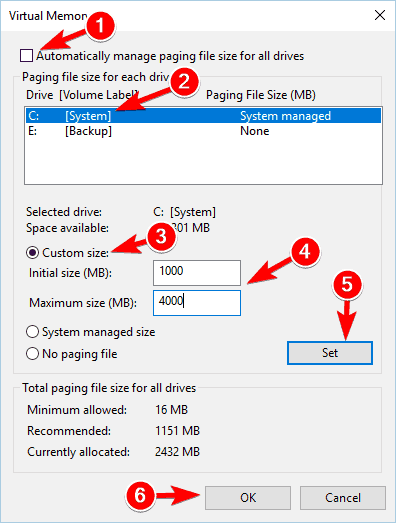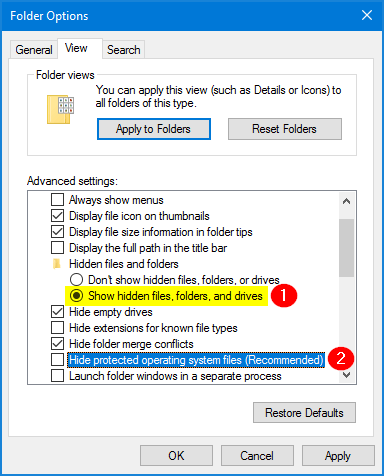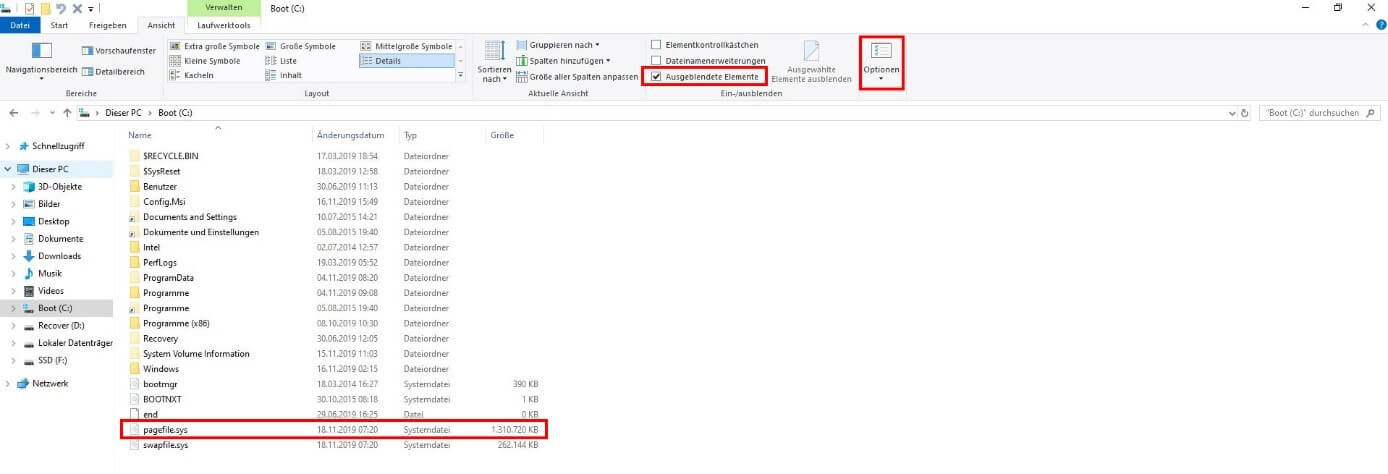

My system has 16Gb of RAM and the constant paging file size is set to the recommended 2932 mb allocation, on the D:\ drive, for all drives. With the same page file size in both the minimum and maximum size fields, the paging file will be a fixed constant size, helping to minimize SSD wear and file fragmentation. Next, enter the desired page file size in the "Custom Size" fields.Įither enter a minimum and a maximum page file size in the fields, or enter the same file size in both fields. Next, uncheck the "Automatically manage Page file size for all drives", then click on the "Custom Size" button.


In the "Virtual Memory" field, click on "Change." Windows creates a Pagefile.sys file in C drives root directory, and it is used to swap data between the hard drive and the faster random access memory. In the Performance Settings window, click on the Advanced tab. In the Performance field, select/click on "Settings" With Control Panel view open, select "System". Type "Control Panel" in the Cortana search box, then select "Control Panel, Desktop Application" in the search results. You could also try 1024 mb, if the system seems to run slower than before, increase the page file size. Since the page file is only used as a quick access dynamic memory for current OS needs, it does not need to be more than, for example, 2048 mb. You can also change the size of the page file space to the same value for both minimum and maximum file size.


 0 kommentar(er)
0 kommentar(er)
